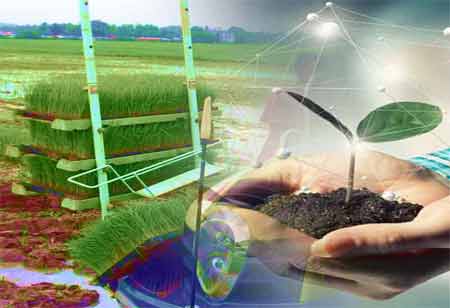Thank you for Subscribing to Agri Business Review Weekly Brief
The Impact of Vertical Farming Indoor on Agriculture
Indoor farming solves pressing global challenges, such as feeding a rapidly growing population safely and sustainably while mitigating environmental harm

By
Agri Business Review | Monday, January 29, 2024
Stay ahead of the industry with exclusive feature stories on the top companies, expert insights and the latest news delivered straight to your inbox. Subscribe today.
Enclosed and hygienic facilities reduce the need for pesticides, preventing groundwater contamination.
FREMONT, CA :Indoor farming solves pressing global challenges, such as feeding a rapidly growing population safely and sustainably while mitigating environmental harm. Many businesses are turning to indoor vertical farming within the horticulture industry to gain greater control over crop growth. By cultivating crops on vertically stacked growing shelves within enclosed facilities, such as buildings or containers, and leveraging indoor farm technology for precise climate control, growers are experiencing unprecedented benefits. The advantages of indoor farming extend far beyond the farm itself; they have wide-ranging implications.
Indoor farms are housed in enclosed facilities, allowing for meticulous control of all climate conditions, including temperature, light, humidity, and water. Horticulture businesses are achieving steady growth and increased profitability by embracing cutting-edge technology in indoor farming systems. Farmers maximize crop yield by optimizing space utilization and enabling year-round cultivation regardless of weather conditions. It results in predictable, reliable, and consistent outcomes. Indoor farming companies enhance crop quality by providing a safe environment free from pests, pathogens, and harmful chemicals.
Continuous monitoring and precise management of indoor climate conditions contribute to improving crop health. Plants can be grown indoors in urban areas through indoor urban farming methods. It means that fresher products can be transported to stores through fewer distribution channels, ensuring a safer product reaches consumers. Growing crops within enclosed and hygienic facilities eliminates the need for pesticides, preventing groundwater contamination. Proximity to the market reduces pollution caused by transportation. Indoor hydroponic farming ensures clean, nutrient-rich water use and reuse through water disinfection and recirculation systems.
Centralized irrigation systems precisely determine the required moisture balance for crops, reducing water usage. We need to be able to feed more people with safer food faster as the global population grows. It must be achieved sustainably with minimal environmental impact to safeguard the planet. Space optimization enables more food to be produced per square meter of land in stacked vertical indoor farms, meeting the needs of future cities. Growing food near markets ensures safer products reach the plates, reducing the risks associated with pollution and foodborne illnesses.
Improved crop quality allows for providing healthy food to a larger population, improving the health of future generations. Eliminating pesticides from farming reduces environmental impact and supports a greener approach to agriculture. Efficient water usage helps conserve the precious resource, contributing to the preservation of the planet. Indoor vertical farming offers a promising solution to food production, sustainability, and environmental preservation challenges. By harnessing technological advancements and maximizing resource efficiency, indoor farming companies are paving the way for a more secure and sustainable future.





